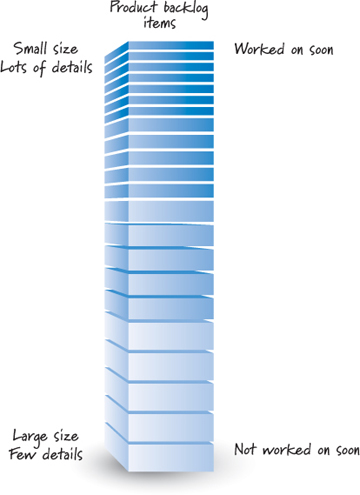Product backlog refinement, or PBR, is an integral component of successful Scrums. This process of continuously reviewing product backlog items, to ensure that teams know exactly what to work on in the sprints, cannot be done without. It keeps the teams and the product owner on track. To understand why PBR is critical, it is necessary to first understand the details of what PBR is, what we expect from it, and the strategic value it provides.
What is PBR?
Product backlog refinement is the process in which the product owner, ScrumMaster, and the development teams review the product backlog items and define the stories that they will need to work on during the immediate sprint. Epics or unclear stories are split apart into smaller stories and are detailed in this process, while unnecessary backlog items are removed. In so doing, the backlog items are analyzed in terms of how much time and work each one will require, and the requirements for each item are clarified. After the PBR session is complete, each story should be valuable and testable.
PBR is conducted in each sprint planning meeting to address the tasks for the immediate sprint. Thus, for each project, PBR is conducted at least as many times as the number of sprints. New Scrum teams, or those with sprints of more than two weeks, may find it useful to conduct more PBR meetings than the number of sprints in their project; additional meetings would be conducted outside of the sprint planning meetings, and these could compose up to ten percent of the teams’ time. The frequency with which PBR should be conducted is due to the volatile nature of Scrum product management. The completion of each sprint reveals more details regarding the product, which results in the need to alter stories — by adding or deleting certain aspects of the stories — and update.
Expectations from PBR
The process of PBR is conducted with the intention of thoroughly prepping development team members about the sprint’s tasks, such that the teams know precisely what to work on and achieve by the end of the sprint. It also is conducted to assist the PO in getting the top-priority backlog items ready for the sprint planning meeting. Essentially, product backlog refinement occurs with the purpose of clarifying each sprint’s tasks and ensuring that they are in sizable chunks that can be accomplished.
Each PBR session is intended to provide team members and the PO with opportunities to update their sprint tasks accordingly, while additional PBR sessions outside of sprint planning meetings enable them to work on detailing and refining a larger number of backlog items.
Vision and strategic value of PBR
Product backlog refinement assists in ensuring progress toward the project’s objectives. The process succeeds in keeping the PO and development teams on track toward the project’s main objectives, as it is a way for the PO, ScrumMaster, and development teams to maintain a clear vision of the sprint tasks, especially in light of product feedback, the emergence of new ideas, and changes in project needs — aspects that can occur throughout each sprint. Scrum product management involves constant shaping of the product, which necessitates redefining the backlog tasks in each sprint. PBR optimizes such redefining of backlog tasks, thereby preventing the PO and teams from losing sight of the work to be completed in each sprint. In so doing, PBR keeps the PO and teams on track during the project.
Not only does PBR keep the PO and development teams on track but it also provides strategic value in that conducting PBR prevents a number of issues from arising later on in the sprint. A main issue that PBR can help the PO and teams to avoid is delivery of stories that do not meet the recipient’s full needs. Without PBR, teams work on stories whose details are not clarified, leading the teams to complete the stories unaware of certain requirements. This results in a loss of time and effort. Another related issue that PBR can make avoidable is a volatile team velocity that results from running ambiguous sprints. If a PO and the development teams choose to forgo PBR, they also risk completing sprints where the stories they worked on were not the most valuable stories. Had a PBR meeting been conducted, the more valuable stories could have been noted and addressed accordingly.
Summary
The value and benefits associated with product backlog refinement are large, as are the consequences of forgoing the process. On top of the value it holds, PBR can be easily integrated into each sprint. Therefore, there is little reason to pass over this process that is critical to Scrum success.
[This article was originally published on ScrumAlliance.org]







